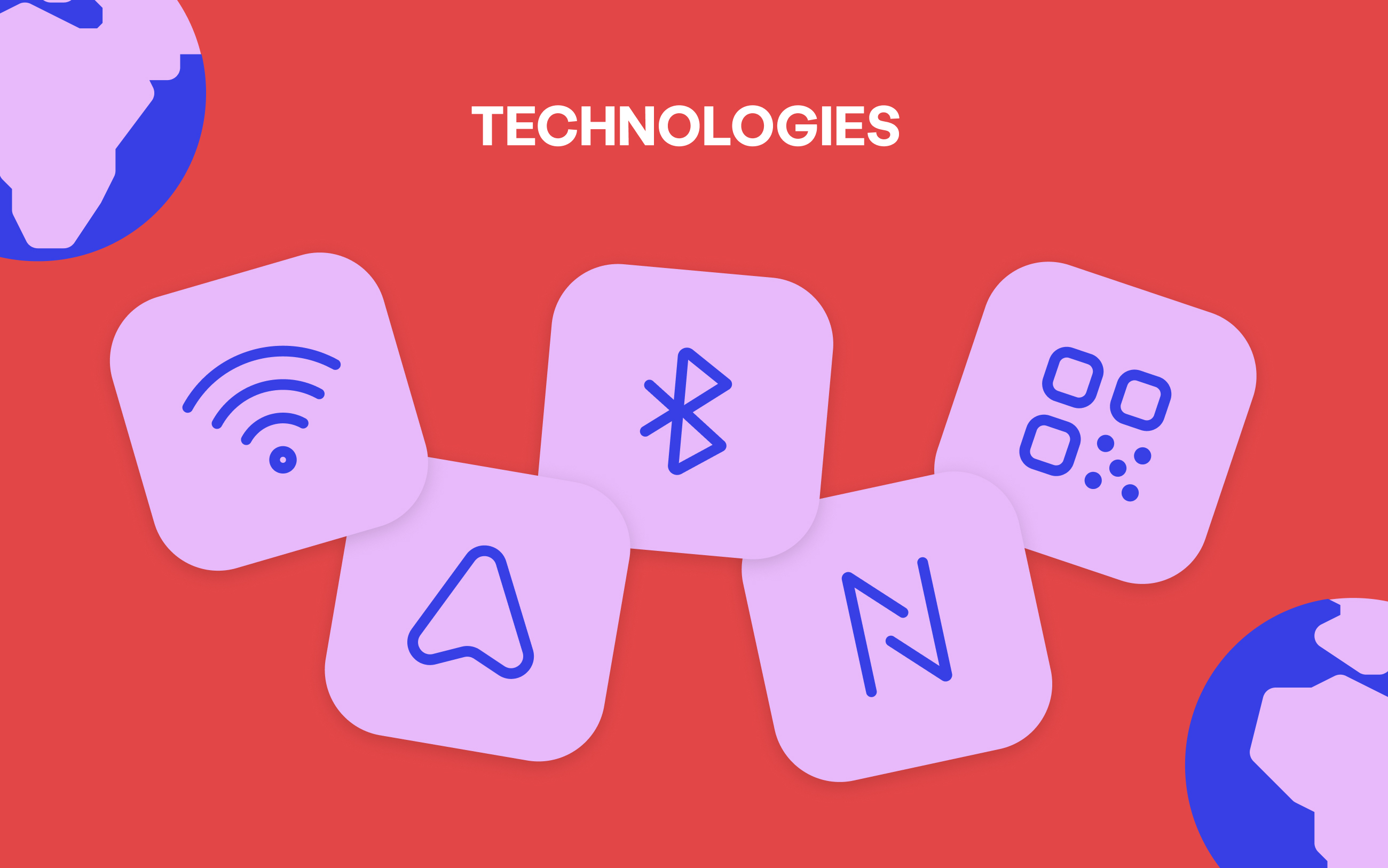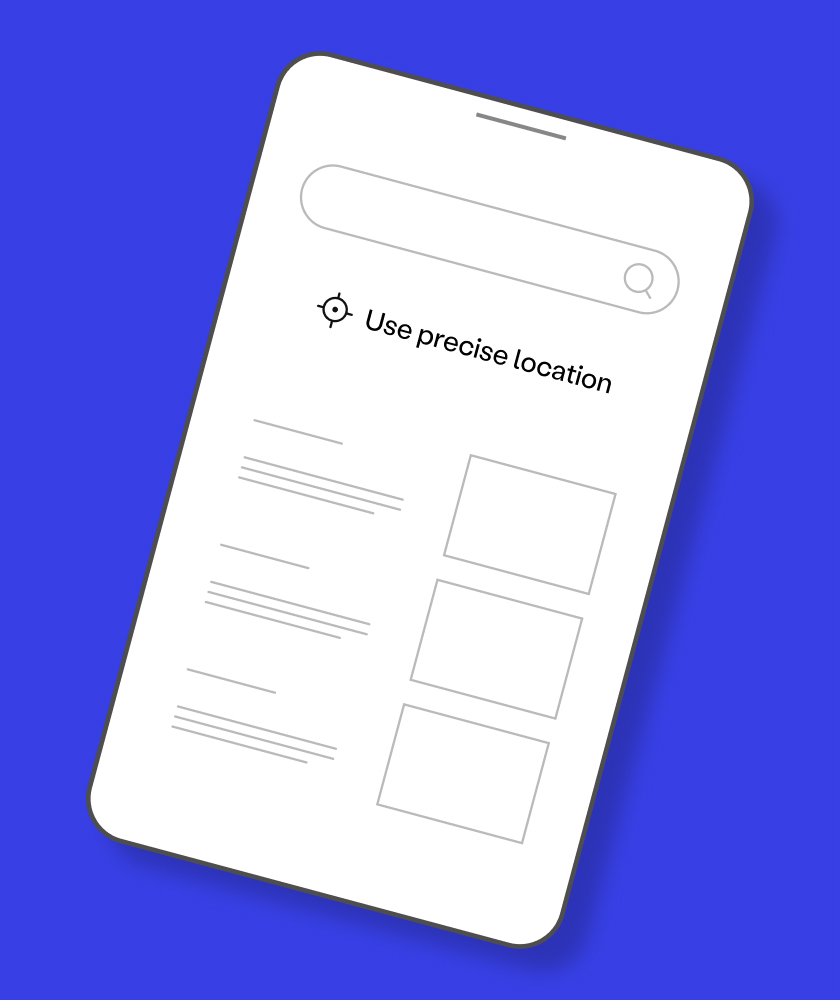Find out what proximity marketing is and what advantages it offers companies to promote themselves.

Proximity marketing represents one of the most innovative trends in the marketing world. This strategy is based on the use of geo-localised technologies to reach audiences in the right place and at the right time, delivering a highly targeted and relevant marketing experience.
Let's find out how proximity marketing works, its practical applications and its impact on customer engagement.
What is proximity marketing and what is it for
Proximity marketing is a form of marketing that uses an individual's geographic location to deliver personalised messages and promotions. This strategy relies on location technologies, such as GPS and Bluetooth, to identify a user's location and send relevant information in real time.
The goal of proximity marketing is reaching a specific target audience with relevant messages, with the aim of increasing brand awareness, generating traffic to a shop or event, or boosting sales.

What is proximity marketing based on
This approach is based on the use of fast networks, mobile devices and technologies that enables to track wherever they are.
Proximity marketing is based on the concept of increasing the 'moments of truth', i.e. the moments when users come into contact with a product or service. Thanks to the use of smartphones, the number of these moments has increased significantly. Proximity marketing capitalizes on this dynamic by engaging users precisely when they are actively seeking information about a particular product or service.
The benefits of proximity marketing
Proximity marketing makes it possible to reach specific audiences with customised messages, thanks to geolocalisation, which allows the location of a mobile device to be identified to those who are in a certain geographical area.
- Customer engagement: Proximity marketing offers immediate and highly personalised engagement, enhancing the customer experience.
- Increased sales: Targeted offers can stimulate impulse purchases, increasing sales.
- Increased relevance: Messages sent are more relevant as they are based on the user's location and past behaviour.
- Possibility to create localised, measurable and customised advertising, which can be adapted to different circumstances and objectives
- Precise measurability of results, enabling effective investment management.

Proximity marketing technologies

WiFi
The presence of free WiFi in a given area is a useful strategy to ensure that users are connected and easily reached by messages related to their physical location.
GPS and Geofencing
GPS is one of the fundamental technologies of proximity marketing. It allows a device's location to be precisely determined and targeted messages to be sent when a user approaches a specific location.
Geofencing is a common practice in this context, virtually defining a perimeter around a geographical area. When a user enters or leaves this perimeter, customised notifications or offers are triggered.
Bluetooth Low Energy (BLE)
Bluetooth Low Energy (BLE) is widely used in proximity marketing to enable communication between nearby devices without consuming a lot of energy. Beacons, small Bluetooth devices (such as Apple's iBeacon), are placed in a specific area and transmit signals that can be detected by consumer apps. This allows offers and promotions to be sent when a consumer approaches a beacon.
NFC (Near Field Communication)
Near Field Communication is another key technology often used for proximity marketing. Enabling short distance communication between devices, NFC is used in virtual loyalty cards or stickers that can be read by smartphones or other compatible devices.
QR codes
QR codes can be used to direct users to a website or mobile app. QR codes can be printed on printed material, such as flyers or posters, or displayed on digital displays. However, this mode requires the user to be willing to scan the codes, or to download an app to do so.
How proximity marketing works
The process starts with the collection of location data from users' devices. The user must consent to the use of this data, thus ensuring compliance with privacy regulations.
Once location data has been obtained, companies can create location-based user profiles. These profiles include information about users' behaviour in certain locations, purchase preferences and other relevant information.

When a user approaches a specific location or enters a geofencing zone, the system sends customised messages. The messages sent may include special offers, discounts or relevant information based on the previously created user profile.
After sending messages, companies monitor user responses and collect additional data. This data is crucial for evaluating the effectiveness of the proximity marketing campaign and making any improvements.
How to use proximity marketing
Retail sales
The retail sector is one of the areas where proximity marketing has been most successful. Companies can send special offers when a consumer is in the vicinity of a shop, thus encouraging impulse purchases and improving the overall shopping experience.

Events and entertainment
Event organisers can use proximity marketing to engage audiences during performances, concerts or events. Special offers on event-related products or services can be sent to nearby participants, creating a closer link between the event and consumers.

Food and restaurants
Restaurants can exploit proximity marketing to send special offers to potential customers in the vicinity. This can influence the choice of where to eat and encourage spontaneous visits.

Challenges for proximity marketing
Proximity marketing, although offering numerous opportunities and advantages, faces some challenges that require careful consideration and management by those who use it.
1. User privacy
One of the most significant challenges is the management of user privacy. Since proximity marketing involves the collection and processing of users' location data, it is essential to ensure that this is done in compliance with privacy laws. Privacy concerns may arise from legitimate fears about sharing location data. To address this challenge, companies must adopt clear transparency policies and obtain users' explicit consent before collecting and using such information.
2. Increasing competition
As the popularity of proximity marketing increases, competition to capture users' attention becomes more intense. This requires companies to find new ways to distance themselves from the competition in using this strategy to ensure that it remains viable. The saturation of proximity messages can lead to resistance from users, who may be inclined to ignore or turn off notifications. Therefore, it is essential to provide quality and relevant content to ensure that proximity marketing continues to prove profitable.
3. Effective campaign management
Planning and executing proximity marketing campaigns require careful management and dedicated resources. Determining relevant geographic areas, creating customised messages, and evaluating user responses are complex processes that require constant monitoring. The lack of a well-structured strategy and adequate resources can jeopardise the success of campaigns and reduce their impact.
4. Changes in user behaviour
User behaviour may vary according to different factors, such as consumption trends, social events or seasons. Companies must be able to adapt their proximity marketing strategies to respond to these variations and ensure that messages are always relevant and in tune with users' needs and expectations.
5. Integration with other marketing strategies
For maximum benefits, proximity marketing must be integrated synergistically with other marketing strategies. Consistency in messaging and alignment with the company's overall strategy are crucial to ensure that proximity marketing contributes positively to business objectives. Integration with online and offline channels, such as social media and traditional advertising, is essential to maximise the overall impact of marketing campaigns.
Proximity marketing - Bottom line
While proximity marketing offers beneficial opportunities, those who use it must face and overcome some key challenges.
Privacy management, intensifying competition, effective campaign planning, adaptation to changes in user behaviour and strategic integration are crucial elements for success in the dynamic world of proximity marketing.
Proximity marketing represents a significant shift in companies' approach to customer engagement. By leveraging location technologies, companies can offer more personalised and relevant experiences, creating a stronger connection with their audience. However, it is crucial to manage location data carefully, ensuring compliance with privacy regulations and to maintain user trust. With a well-planned strategy, proximity marketing can lead to positive results for businesses and improve the overall consumer experience.

